By Jacob Aplaca
Teaching matters at CUNY.
This is what I tend to say when asked about what makes getting a PhD at The Graduate Center so unique and so valuable an experience.
This is, of course, a deceptively simple reply. Yes, “teaching matters at CUNY,” just as it does at a number of other institutions across the country. But here teaching matters in relation to a number of specific factors: our history of open admissions, our status as public university system in one of the world’s most diverse cities, and the material constraints that contextualize everything we do as instructors in this institution today. And then there is also my own personal attachment. I love teaching, I love my discipline (English), and my time spent at the front of the classroom has been a welcomed reprieve from the more isolating aspects of doctoral study.
In light of the central place teaching holds in my life and the lives of my colleagues, I found Jean Amaral’s exploration of “open pedagogy” during the Open Pedagogy Fellowship Boot Camp in January a gratifying and enlightening experience.
 Open pedagogy has been defined in a number of ways. For some, Open Pedagogy begins with Open Educational Resources (OER), which are “free and openly licensed educational materials that can be used for teaching, learning, research, and other purposes.” While this is certainly important, especially at a public university where students often do not have much money to spend on expensive textbooks, Jean pointed out that this was only a small part of a larger picture.
Open pedagogy has been defined in a number of ways. For some, Open Pedagogy begins with Open Educational Resources (OER), which are “free and openly licensed educational materials that can be used for teaching, learning, research, and other purposes.” While this is certainly important, especially at a public university where students often do not have much money to spend on expensive textbooks, Jean pointed out that this was only a small part of a larger picture.
Open Pedagogy really starts with praxis, asking instructors to consider how “theories about learning, teaching, technology, and social justice enter into a conversation with each other and inform the development of educational practices and structures.” In doing so, instructors will hopefully develop courses and learning materials that prioritize accessibility, broadly defined. This means not only incorporating zero-cost and OER materials accessible to both able-bodied and differently-abled students, but also creating new, openly-licensed learning materials that can be easily shared.
Open Pedagogy also entails rethinking the classroom, moving away from a teacher-centered learning environment to one that is not simply student-centered, but learner-driven. It is one thing to say that we have “flipped” our classrooms; it is quite another thing to actually build into our syllabi that kind of flexibility and openness necessary for students to make meaningful modifications to the shape and content of our courses.
Furthermore, rethinking the classroom requires that we look beyond it, making the materials, assignments, and (with their permission) student work generated therein objects of public knowledge, able to contribute to the pedagogy and learning of those both within and outside of the CUNY system. This sort of openness means first rejecting learning management systems (LMS) like Blackboard, and migrating course assignments and openly-licensed learning materials to an open platform like the CUNY Academic Commons. It also means rejecting a pervasive culture of isolation and secrecy in the development, teaching, and evaluation of our courses.
Overall, sounds pretty easy, right?
Not necessarily. As part of the Open Pedagogy Fellowship, I have been tasked with incorporating these practices and materials into my own teaching. In doing so, I have been astounded by how many of my own pedagogical habits of mind run up against many features of Open Pedagogy. For example, it has been hard for me to give up my sense of total control in the classroom. And, being the worrier that I am, the idea of making my pedagogical resources and teaching strategies available online has produced no small amount of anxiety in my life.
However, there has also been a remarkable upside. While it has not been long—and I must admit that my class is not yet fully “open”—there has already been a shift. Having committed myself to a model of learner-driven discussion and afforded my students the necessary agency to interrogate my course content and make real adjustments, I have noticed in my students a level of investment in their learning I have never seen before. What is more, I have noticed in my students an investment in one another. During class discussion, students are no longer just talking to me as if the opinion of the instructor is the only one that matters.
So even though I still have work to do, I am proud of the openness of my course thus far. Again and again, my students are demonstrating their willingness to rise to the occasion. I also believe in the zero-cost and open-access materials I have incorporated and developed for my class. They are available, and I hope people use them. And, finally, I hope my experiences encourage other instructors to contribute to the project of Open Pedagogy at CUNY and beyond.
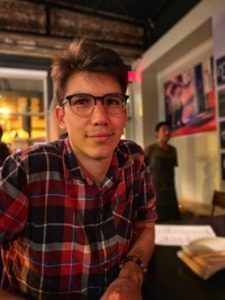 Jacob Aplaca is a third-year PhD student in the English program at the GC and a teaching fellow at Hunter College. His current research focuses on figurations of queer loss and melancholia in 20th and 21st-century literatures. In his spare time, he indulges in writing bad poetry, some of which can be found in PANK Magazine and Yes Poetry, and complains about adjunct life on McSweeney’s Internet Tendency.
Jacob Aplaca is a third-year PhD student in the English program at the GC and a teaching fellow at Hunter College. His current research focuses on figurations of queer loss and melancholia in 20th and 21st-century literatures. In his spare time, he indulges in writing bad poetry, some of which can be found in PANK Magazine and Yes Poetry, and complains about adjunct life on McSweeney’s Internet Tendency.
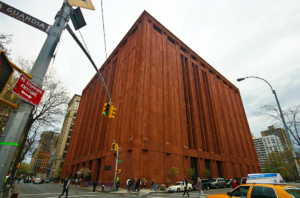

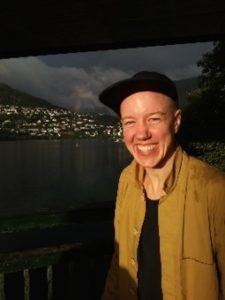 Jaime Shearn Coan is a writer and PhD candidate in English at The Graduate Center, CUNY, and a Digital Publics Fellow at The Center for the Humanities. His critical writing on performance has appeared in publications including TDR: The Drama Review, Critical Correspondence, Drain Magazine, The Brooklyn Rail, Bodies of Evidence, and Women & Performance. He is the co-editor of the 2016 Danspace Project Platform catalogue: Lost and Found: Dance, New York, HIV/AIDS, Then and Now.
Jaime Shearn Coan is a writer and PhD candidate in English at The Graduate Center, CUNY, and a Digital Publics Fellow at The Center for the Humanities. His critical writing on performance has appeared in publications including TDR: The Drama Review, Critical Correspondence, Drain Magazine, The Brooklyn Rail, Bodies of Evidence, and Women & Performance. He is the co-editor of the 2016 Danspace Project Platform catalogue: Lost and Found: Dance, New York, HIV/AIDS, Then and Now.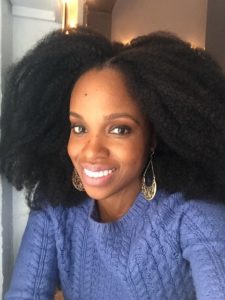 Adashima Oyo is a PhD student in the Social Welfare program at The Graduate Center, CUNY. She earned both a Master of Public Health (MPH) and a Bachelor of Arts in English from Brooklyn College, CUNY. Her research interests explore the impact of the “minority-majority” demographic shift on health disparities. Adashima is also interested in examining the impact of the glaring lack of racial diversity among doctoral students, faculty and executive-level leadership in higher education. In addition to working as the Director of HASTAC Scholars, she is part of the adjunct faculty at New York University (NYU) and Brooklyn College, CUNY where she teaches courses about healthcare and developing research papers to undergraduate students. Adashima is also a Futures Initiative Fellow and Silberman Doctoral Fellow. #BlackScholarsMatter
Adashima Oyo is a PhD student in the Social Welfare program at The Graduate Center, CUNY. She earned both a Master of Public Health (MPH) and a Bachelor of Arts in English from Brooklyn College, CUNY. Her research interests explore the impact of the “minority-majority” demographic shift on health disparities. Adashima is also interested in examining the impact of the glaring lack of racial diversity among doctoral students, faculty and executive-level leadership in higher education. In addition to working as the Director of HASTAC Scholars, she is part of the adjunct faculty at New York University (NYU) and Brooklyn College, CUNY where she teaches courses about healthcare and developing research papers to undergraduate students. Adashima is also a Futures Initiative Fellow and Silberman Doctoral Fellow. #BlackScholarsMatter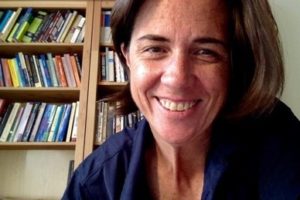 Mary Jean McNamara
Mary Jean McNamara
